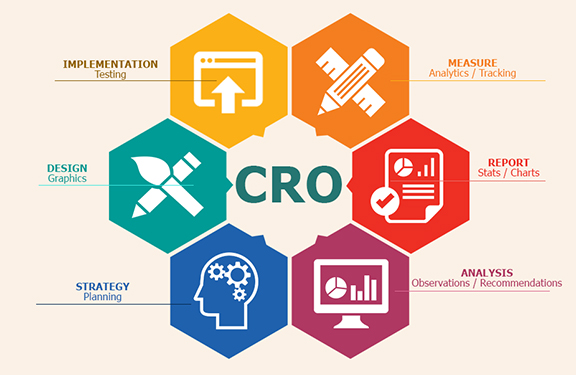The Foundation of CRO
Before you can start optimizing, it’s critical to understand the basic concepts of conversion rate optimization. Every interaction a user has with your site is an opportunity. It begins with a visit and ideally ends with a conversion — a purchase, a sign-up, or any other goal you’ve set.
Understanding CRO Metrics and Goals
Before beginning any conversion rate optimization (CRO) efforts, it is crucial to establish a clear understanding of what conversion means to your business. Is it a completed sale, a request for a product demonstration, or signing up for a newsletter? Identifying the specific actions that you consider as conversions will help you determine the metrics that are most important to track.
Some standard metrics to consider include the click-through rate, bounce rate, and average time spent on your website. These metrics can provide valuable insights into the effectiveness of your website in converting visitors into customers.
Once you have identified your key conversion metrics, setting SMART goals for your CRO efforts is important. SMART goals are Specific, Measurable, Achievable, Relevant, and Time-bound. By setting clear and specific goals, you can ensure that your CRO efforts have a clear direction and purpose, ultimately leading to improved conversion rates and increased business success.

Source: https://shreyanshgoel16.medium.com
Mapping the Conversion Funnel
The conversion funnel is a streamlined representation of a customer’s journey towards making a purchase. It consists of key stages, such as awareness, consideration, and decision-making. By carefully examining the conversion funnel, businesses can pinpoint drop-off areas and gain insights into where potential customers may be lost in the process.
Uncovering Conversion Barriers
Even the tiniest of issues can snowball into substantial losses if left unaddressed. Recognizing these barriers is the first step in removing them.
Techniques for Barrier Detection
Use tools like Google Analytics to track user behaviour, set up heatmaps to see where users are clicking (and not clicking), and conduct user testing to get direct feedback. This approach helps paint a clear picture of where users might encounter friction.
Common Conversion Barriers and Solutions
High shipping costs, a complicated checkout process, or a lack of trust badges can all deter a customer. To overcome these, consider offering free shipping, simplifying your forms, and prominently displaying security seals. Make it as easy and enticing as possible for users to convert.
Evaluating Your Current Website
Before making any changes, it is essential to have a comprehensive understanding of what is working and what is not on your website. Your website audit should focus on both identifying areas of clarity and providing constructive criticism.
Website Check
Assess the speed, usability, and content of your website. Consider the ease of navigation, the visual appeal of images and text, and the clarity of messaging. Identify any technical issues that may be impeding site performance or hindering user experience.
Aligning Content with Conversion Goals
Your content should effectively lead users towards conversion. This entails ensuring that each page on your website serves a specific purpose, with every element – from images to headlines – contributing to the overall goal.
Crafting a Conversion-Focused Design
Now that you have identified your conversion goals and barriers, it is time to optimize your design and user experience to encourage action. This step is crucial in ensuring that your website or platform effectively drives users towards taking the desired actions. By enhancing the overall design and user experience, you can create a more engaging and seamless journey for your visitors, leading to increased conversions and success for your business.
The Power of Landing Pages and CTAs
Landing pages serve as the initial introduction potential customers have to your brand. It is crucial that they are crafted to be both targeted and compelling. Each landing page should focus on a singular, distinct call to action, which must be prominently featured for maximum impact.
Taking Care of Mobile Audience
With more web browsing done on mobile devices than on desktops, it’s critical to have a responsive design that offers a seamless user experience across all devices. Don’t make users pinch and zoom to find crucial information. Make sure your mobile site is clean, fast, and easy to use.
Measuring and Analyzing Results
You need more than just making changes; you need to know if those changes actually improved your conversion rates. See how to maintain a constant cycle of improvement through measurement and analysis.
Tools for Continuous Optimization
Utilize A/B testing to compare different page versions and see which produces better results. Use conversion tracking to link conversions back to the source of the traffic. Remember, what gets measured gets managed, and what gets managed gets better.
Conclusion
Conversion Rate Optimization (CRO) is a powerful tool for driving business growth, and the design of your website plays a crucial role in its success. By grasping these fundamental principles and approaching them strategically, you can develop a website that looks visually appealing and generates significant conversions. Investing time in analyzing your current site, establishing clear conversion goals, and consistently testing, analyzing, and refining your strategies is essential. The effort you invest now will yield substantial results in increased customer engagement and improved business outcomes.
Ready to unlock the full potential of your website? Our team at Fooz is here to help you craft a digital experience that wows your customers and grows your business. Get in touch to learn more about our services.


